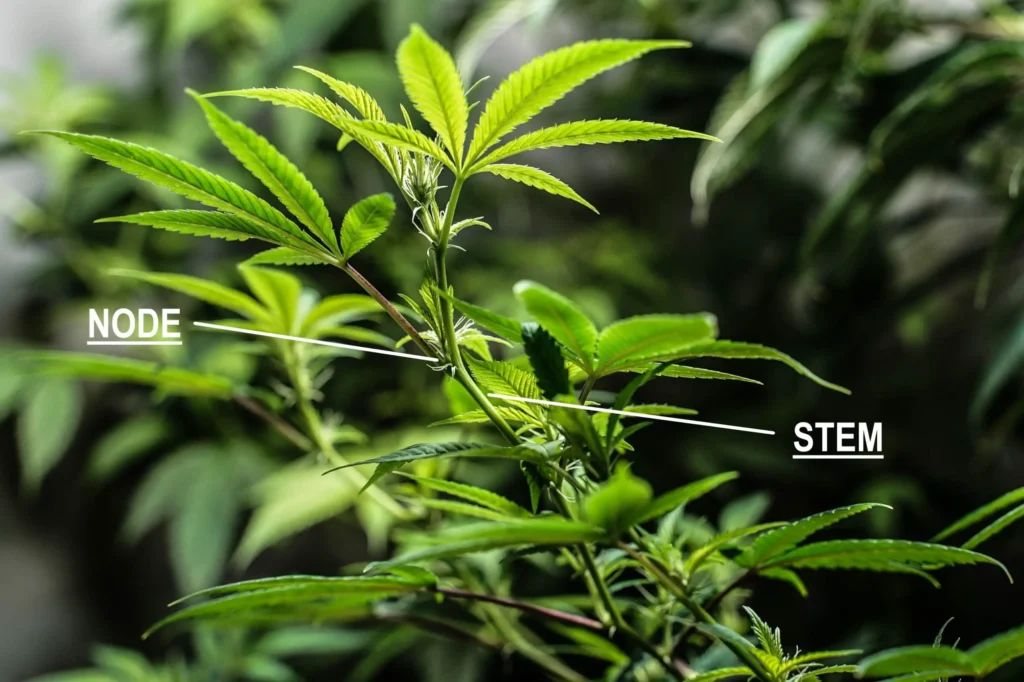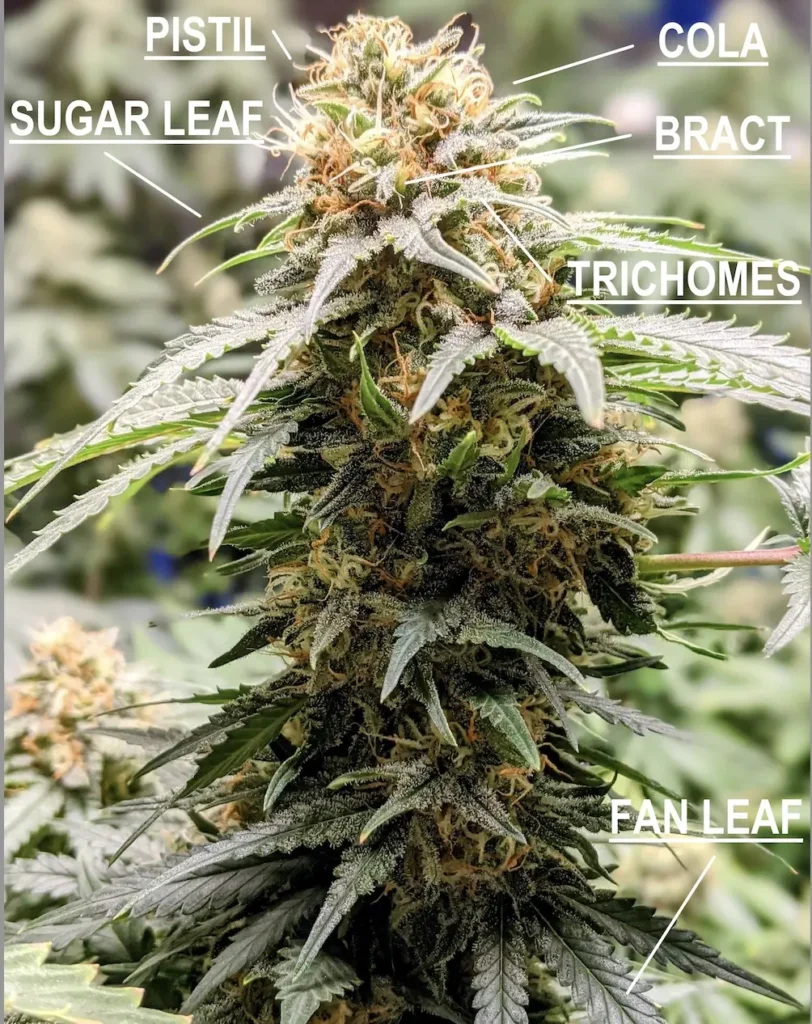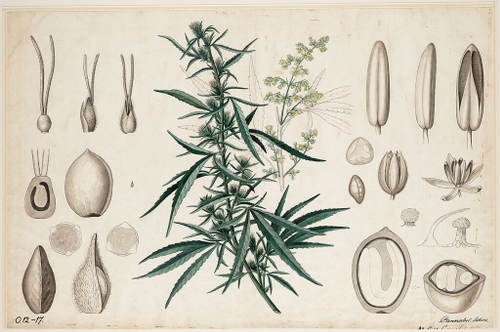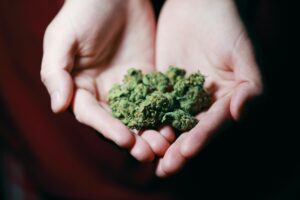Cannabis is a medicinal plant that is moving to the forefront of holistic health care solutions. The potent flowers have a long and prosperous history with civilizations throughout the world. From the roots to the flowers, many components offer therapeutic value, and each plant part serves a purpose in the cultivation process.
Hemp vs. Cannabis
Some confusion exists with respect to these two classifications, but the difference lies in the concentration of THC within a given plant, with hemp containing 0.3 percent or less THC. Hemp and cannabis each have over 500 chemical compounds, including more than 125 phytocannabinoids such as THC and CBD. While cannabis is primarily used for medicinal and recreational purposes, hemp tends to be more industrially versatile and can be used in the production of various items such as paper, rope, and building materials. More recently, there are a growing number of beauty and self-care hemp products such as dietary supplements, skin products and makeup lines.
Observing the appearance of the two plants, the shapes and attributes also differ. Hemp grows taller (sometimes up to 20 feet), with thinner leaves that concentrate at the top of the plant. Cannabis on the other hand is stockier and more bushy, with broad leaves and buds that appears to have tiny hairs or crystals. Additionally, hemp can grow in a variety of climates, is hardier and requires less attention. Cannabis on the other hand, requires a carefully controlled environment that is warm with a humid atmosphere, in order to thrive.
Male vs. Female vs. Hermaphrodite
Cannabis is a dioecious species which means it produces male and female plants. This genetic characteristic is rare in flowering plants, only 6% of angiosperms species share this trait. When cultivating cannabis for medicinal or recreational use, it is vital to use only female plants, as males will pollinate females causing them to produce seeds and thereby decrease their THC production. As such, the term “sensimilla” is used to refer to this process of using only unfertilized female plants in order to maintain a higher THC potency. Cultivators using seeds must learn to identify the plant’s sex early in their development to reduce accidental pollination, the key to which is watching the node’s development.
Male Plant
Male plants produce seeds but no flowers. However, they do grow pollen sacs necessary for developing new cannabis strains. The male plant is identifiable by the tiny green eggs or pollen sacs.
Female Plant
Female plants are seedless and contain calyxes that grow pistils. These quickly change from small pre-flowers to dense flowers in a few weeks.
Hermaphrodite
A hermaphrodite is a plant with male and female reproductive parts. Cultivators treat these like pure males and remove them fast to prevent pollination.
Cannabis Plant Anatomy
There are several components of the cannabis plant. The function of each part of the plant and its relationship with the other parts of the plant is crucial to maintaining a healthy plant.
Cola: The cola is the central flower cluster where the flowers or buds of a female cannabis plant grow together tightly at the tip of the plant’s stem. The larger the cola, the more substantial effect the plant produces. The plant’s genetics determines this characteristic.
Flower: The flower is a distinct female component. These are fluffy or dense and grow in various shades of green, yellow, red, blue, and purple. Most flowers are teardrop in shape and are heavily coated in trichomes. Also referred to as buds, they are covered in hair-like pistils that attach to the bracts.
Bract: There are three types of leaves that surround the cannabis flowers. The smaller leaves that form around the reproductive cells are bracts.
Sugar Leaves: The sugar leaves are also small, like the bracts. However, they are found around the colas and appear to cup the flowers. These do not contain sugar. Instead, growers refer to them as sugar leaves because they make the flowers appear to sparkle. The sheen comes from the high concentration of trichomes coating the leaves.
Fan Leaves: The large leaves on the cannabis plant absorb the sun and are the powerhouse for photosynthesis. Many of these are trimmed as the plant grows, and they are discarded completely following the harvest.
Pistil: The pistil is part of the plant’s reproductive system. It contains a single ovule and has two stigmas: thin hairs that extend from the bract.
Trichomes: The factory of the cannabis plant exists within the trichomes. These minuscule mushroom-shaped outgrowths produce the 500-plus compounds found on the plant’s stalk, stems, and flowers. The trichomes are responsible for the almost wet appearance of cannabis flowers.
Stem: The stem is the main transport for the plant. It moves water and nutrients to the leaves and flowers. It also helps support the leaves and flowers.
Node: The node provides connection points between the stem and leaves. These cannot carry much weight, one or two leaves at the most. Nodes play an essential role in cannabis cultivation. They are where the male plant begins to grow pollen sacs and where the pistils begin to form on the female.


Indica vs. Sativa vs. Ruderalis vs. Hybrid
All three cannabis species look and act differently from one another, but the two most well-known subspecies are sativa and indica. A third variety that is not as well-studied or used is ruderalis.
Over the past 30 years, breeders have developed thousands of hybrids of the sativa and indica subspecies. Although there may exist a limited number of pure indica and sativa plants, the overwhelming majority are hybrids. For the most part, hybrids vary from 90 percent indica-dominant to 95 percent sativa-dominant and everything in-between. Each plant offers a difference in appearance and effect.
In the past, indica, sativa, and ruderalis also defined the effects of the flowers. However, experts believe there are other ways to classify the different subspecies. Between the extensive crossbreeding over the past few decades and new scientific information about the assortment of compounds and essential nutrients, the contents in the trichomes can offer a better and more detailed measurement of each strain’s effect.
Sativa
The sativa is a tall plant with slender leaves that thrives in warm climates. The herb’s migration westward began in Thailand, Southern Africa, and Mexico, where high temperatures and substantial rainfall helped them flourish. When grown in these climate types, the plant grows to an average height of 12-18 feet. When compared to indica, sativa has longer, thinner leaves. Additionally, it has lighter and fluffier flowers, making it easier for its long stalk and stems to support them.
Sativa strains are beloved for their perceived ability to enhance activity, creativity, and sociability, but often lack the high CBD percentages of its indica counterpart. Some of the most popular sativa strains include:
Sour Diesel: Said to be an accidental cross between Chemdog 91 and Super Skunk, the strain smells like gasoline and produces dreamy, cerebral and fast-acting effects. Sour Diesel first became popular in the 1990s and has been considered legendary ever since.
Maui Wowie: Appearing in the 1960s, Maui Wowie was one of the first strains created with greatly increased THC content. Creating an energetic and creative high, this strain is associated with a strong case of the stereotypical munchies and a pleasant relaxing body sensation.
Green Crack: Unique in its potency, Green Crack creates a strong, buzzy high and was originally called ‘Cush” until it was re-named by musician Snoop Dogg. Considered an excellent wake and bake strain, Green Crack is purported to make mundane tasks more fun and interesting while creating a sharp sense of focus.
Indica
Indica plants are hardier than sativa, growing shorter and much bushier with broad leaves. Indica plants can thrive in the summertime across most of Canada, and require much less space than sativa plants, making them a convenient choice for indoor growing. With origins in Central Asia, in countries such as Nepal, Afghanistan, Lebanon and Pakistan, indica strains are popularly believed to promote a more relaxing and tranquil effect than sativa, unwinding and calming the mind and body. Some of the most popular indica strains include:
Purple Kush: Emerging from Oakland, California, Purple Kush is a cross between two landrace strains, Hindu Kush and Afghani. Rather than stimulating hyperactive thoughts, this strain is more likely to create a sense of contentment and calm. Purple Kush was named a Top 10 Strain of All Time by High Times Magazine.
Girl Scout Cookies: This Cannabis Cup award winner is a combination of OG Kush and Durban Poison, Girl Scout Cookies (or GSC), has become a staple strain within the US and Canada. Frequently used for treating chronic pain and inflammation, GSC creates a euphoric feeling and provides a pleasant, tingling body sensation. Stimulating creativity, this strain passes through waves of silliness and introspection.
Northern Lights: perhaps one of the most popular strains of all time, Northern Lights is utilized across all user demographics, including medical patients and recreational consumers. Known as a ‘hit and quit strain’, Northern Lights is extremely strong and catapults users into a lazy, comfort-seeking mode that fuses with a sense of well-being and general happiness. The strain originated in Holland, and is believed to be a mix of two landrace building block strains, Thai and Afghani.
Ruderalis
Ruderalis as a stand-alone strain is rare. However, it is starting to pop up more in hybrids available on the medicinal cannabis market. It is a hardy plant that can grow in one of the world’s most inhospitable climates—Siberia. Ruderalis is extremely stout and compact with thick stems and broad fan leaves, growing to a maximum of only about 20-25 inches tall.
This third subspecies is unique because it is auto-flowering, meaning that the cultivation cycle moves automatically from the vegetative growth stage to flowering after a specific number of days rather than based on its sun exposure. This has led to the development of strains such as Quick One, which was created around the idea that the plant transition to being harvest-ready as fast as possible.
In general, the ruderalis is less known than its indica and sativa counterparts because it is generally used to breed certain qualities into a particular cannabis species.
Landrace Strains
The word landrace refers to “a variety of species that has distinctive characteristics arising from development and adaptation over time to conditions of a localized geographic region.” When referring to cannabis, a landrace strain represents the oldest known cannabis strains, ones that grew naturally in the wild and took on certain qualities based on their environment. For sativa strains, this would be in areas closer to the equator, whereas indica strains grew in more temperate mountainous regions. Landrace strains are the ancestors of the many cannabis types and hybrids seen today.
These landrace plants include:
Durban Poison: Durban Poison is a pure African sativa identified in the 1970s by Ed Rosenthal. It was reproduced in Amsterdam and has been a popular cannabis strain since. Durban Poison often has about 15% THC (Tetrahydrocannabinol) and produces a sweet flavor with citrus undertones and an earthy aroma.
Malawi: Malawi is a pure sativa flower originating from the Salima region of Malawi in southeast Africa with an earthy aroma. The warm climate cannabis has a long flowering time that can last for nearly four months. Laboratory analyses suggest it contains an average of 21% THC.
Kilimanjaro: The 100% sativa strain comes from the eastern side of Kilimanjaro in Tanzania. History suggests it was popular in religious ceremonies among tribes. Kilimanjaro offers a fruity fragrance with lemony undertones and a citrus taste.
Acapulco Gold: Acapulco Gold is a well-known sativa originating from the Acapulco, Mexico region of North America. Laboratory studies indicate it contains an average of 19% THC and produces a burnt toffee fragrance.
Lambs Bread: Also known as Lamb’s Breath, it is an original strain from Jamaica with a sweet and musky aroma. The Landrace gained popularity with the reggae duo Bob Marley and Peter Tosh.
Panama Red: Another well-known landrace strain is Panama Red, which, as the name suggests, originates from Panama. Panama Red provides an earthy fragrance. It saw a boost in mentions in the 1960s. The original strain is a pure sativa with an average growth rate that produces around 17% THC.
Punto Rojo: Punto Rojo is a South American sativa landrace strain that gained popularity in the 1970s. It offers a fruity taste and incense aroma. The rare flower’s THC level is unknown.
Colombian Gold: Columbian gold is a classic sativa landrace strain originating from the Santa Marta mountains in the South American country. It contains an average of 17% THC and provides a skunky fragrance with lemony lime undertones and a sweet taste.
Thai: Thai is a pure sativa cannabis strain originating in Thailand. The Southeast Asian flower generally ranges from 14% and 24% THC. It offers an earthy aroma with sweet undertones and an equally woody taste with a sweet and spicy aftertaste.
Chocolate: Also known as Chocolate Thai, it is another Thailand sativa landrace strain with a twist. It contains an average of 15% and offers a flavor and fragrance, a sweet blend of chocolate and coffee.
Afghani: As the name suggests, Afghani is a pure indica landrace native to the mountains of Afghanistan. Unlike other regions of the world where cannabis was prohibited before the 1940s, the Middle Eastern country did not end cultivation until 1937. Afghani contains an average of 21% THC and produces a skunky, diesel aroma with citrus undertones.
Mazar: Also known as Mazar I Sharif, it is another Afghanistan strain found in the Northern Afghanistan mountains. Mazar contains low levels of THC, about 13%. The pure indica landrace offers an earthy aroma with spicy undertones and a sweet and spicy taste with a lemon-pepper aftertaste.
Hindu Kush: The Hindu Kush is a pure indica landrace named for the harsh area it originates from, the mountain range between Afghanistan and Pakistan. Laboratory analyses show it contains around 18% THC on average and offers a sweet and earthy aroma.
Lashkar Gah: Lashkar Gah is a pure indica landrace strain that also originates from the Middle East. The flower averages between 11 and 13% THC and comes from Southern Afghanistan. It produces a spicy and earthy aroma and flavor.
Hybrid
Most strains available today are hybrids, a cross between two or more strains to create a new variety. Hybrids have features closely related to their dominant subspecies and are produced to achieve a particular effect, the best of both combined strains.
The beauty and complexity of the cannabis plant brings forward a lot of opportunities to learn and grow alongside them. Having basic knowledge of the plant is important for making the right decisions about what cannabis products or strains are right for you.
© Kanab Inc. – Kanab Inc. is a Toronto based cannabis retail company that honors the historical significance and uses of the cannabis plant across cultures and civilizations. Kanab has now opened its first cannabis dispensary at the intersection of Don Mills Road and York Mills Road in North York region of Toronto, Ontario (South of 401, West of 404 / Don Valley Parkway, and East of Leslie). For more info, please visit: kanab.ca









